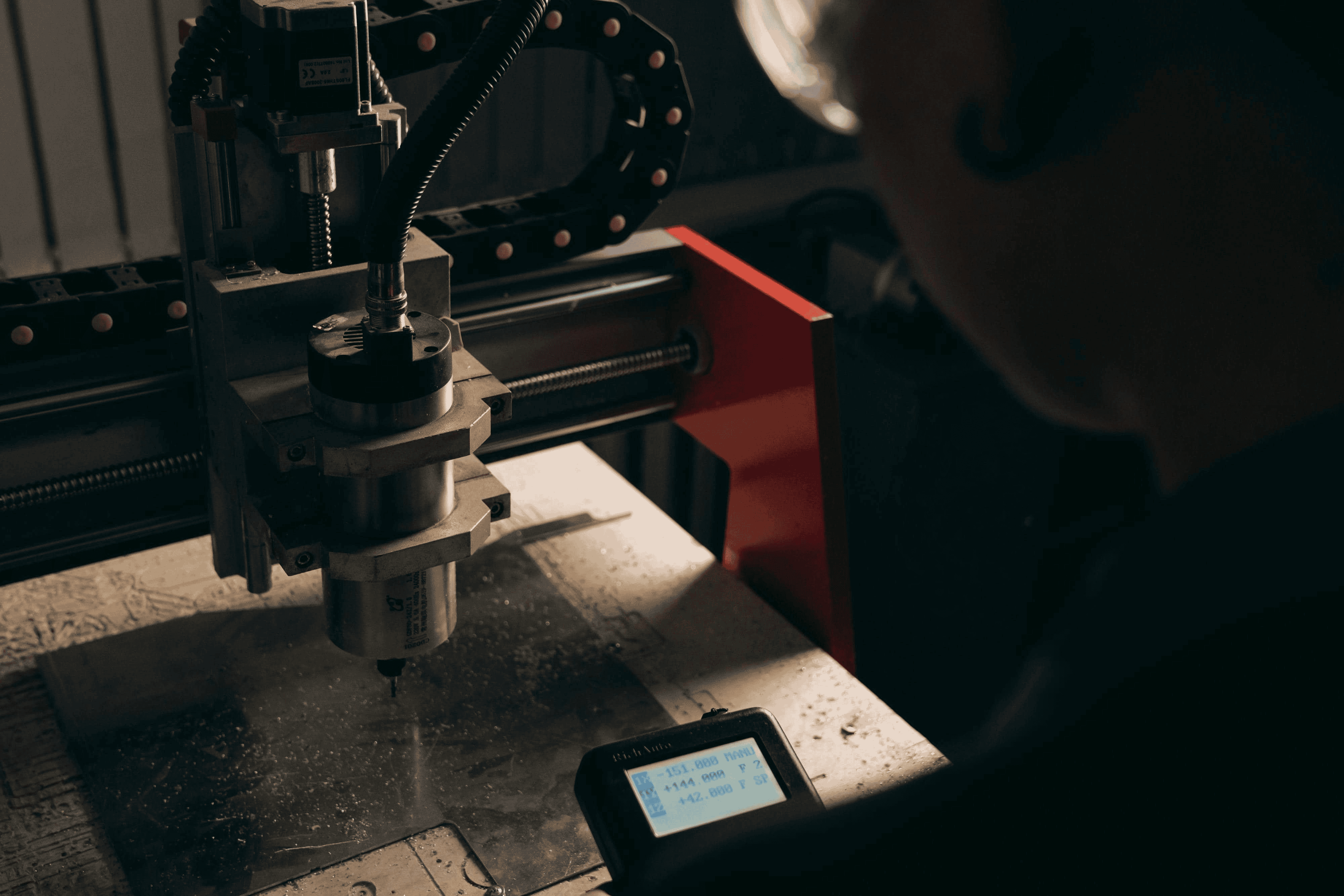Custom Fabrication

Custom metal parts manufacturing is the practice of producing one off or small batch components to a defined drawing or model. The work blends engineering, material science, and precise fabrication to create shapes and features that standard catalog items cannot provide. Teams start with CAD, apply manufacturing constraints, confirm tolerances, and plan a repeatable process for forming, cutting, joining, and finishing. Done well, the result is consistent geometry, predictable performance, and a clean surface ready for assembly.
Technician performing custom metal parts manufacturing on CNC plasma table for precision vehicle components
Match the alloy to load, environment, and weight targets. Design choices here shape cost, tooling, and the best cutting or joining methods.
Good drawings communicate what matters most. Critical dimensions get tighter tolerances. Non critical features stay more open to control cost. Geometric controls like true position, flatness, and perpendicularity define form and fit. Inspect with calipers, micrometers, height gages, or CMM when needed. For production work, use process capability checks, fixtures that constrain part movement, and a clear inspection plan that matches the drawing risk.
The path from quote to finished metal starts with a clear scope. Provide 3D models or fully dimensioned prints, call out the alloy, finish, and any special treatments such as heat treat or passivation. A good manufacturing plan identifies the first operation that sets datum, the sequence of cuts and bends, and how the part is held during each step.
Prototyping validates the design and reveals tweaks that reduce cost or improve assembly. Design for manufacturability often trims secondary operations by changing a radius, moving a hole, or standardizing material thickness. Cost drivers include material grade, plate thickness, geometry complexity, tool changes, setup time, and finishing steps. Lead time depends on shop capacity, fixture build time, and finish cycles.
For low volume runs, flexible fixturing and programmable cutting make economic sense. For repeated orders, dedicated fixtures, bend programs, and inspection gauges create speed and consistency. Good documentation ensures the third batch runs like the first.
Custom parts manufacturing fills gaps where off the shelf hardware falls short. Think complex brackets that mount to irregular vehicle frames, skid protection that follows a specific contour, or housings that must blend strength, light weight, and service access. In automotive and mobility applications, custom made parts often solve packaging challenges, add mounting points for power systems, or reinforce high stress zones. In industrial settings, custom metal parts streamline maintenance by replacing obsolete components or adapting a machine to new tasks.
In every case, specify function first. Define the load path, contact points, and required clearances. Choose the material to meet those demands, then select processes that can achieve the geometry at the required tolerance. Consider weld sequence to minimize distortion, especially on large flat panels or multi bend assemblies. Finish selection should reflect environment and service life, with powder coat and anodize as common choices for durability.
For buyers comparing quotes, look beyond unit price. Confirm that the supplier calls out the same alloy, thickness, finish, and inspections. Ask for sample reports on critical dimensions. Check how parts will be packaged to prevent edge damage or rub marks that ruin finish.
When custom metal parts must fit a vehicle without drama, experience shows. Patterning around factory tolerances, building fixtures that mimic mounting points, and protecting nearby electronics during welding all matter. If you are exploring ways to turn a drawing into a reliable bracket, rack, bumper component, or interior mount, review the options in Custom fabrication at OZK Customs. It outlines the path from design support to production, including material choices and finish planning in Fayetteville Arkansas.
For work that spans cutting, forming, and welding in one place, see our Fabrication services overview. Centralized production reduces handoffs and preserves fit from first article to final run. If you want to understand how we approach quality, timelines, and communication, read Why choose OZK Customs. It captures our build philosophy and how we support clients traveling to Northwest Arkansas for handoffs and training.
Have a part that must align on the first try. Share your model, alloy, finish, and required fit. Our team in Fayetteville Arkansas will translate your intent into a manufacturable plan and deliver repeatable, installation ready metal components. Whether you need a single prototype or a repeat batch, we combine CNC cutting, bending, and welding with practical vehicle experience to produce parts that install cleanly and hold up to real use.
Ready to turn a sketch into a road ready part. Tell us about your component, needed fitment, load, and finish. OZK Customs will quote, engineer, and deliver production worthy metal parts built for real world use.
ADDRESS:
6159 E Huntsville Rd, Fayetteville, AR 72701
PHONE:
(479) 326-9200
EMAIL:
info@ozkvans.com